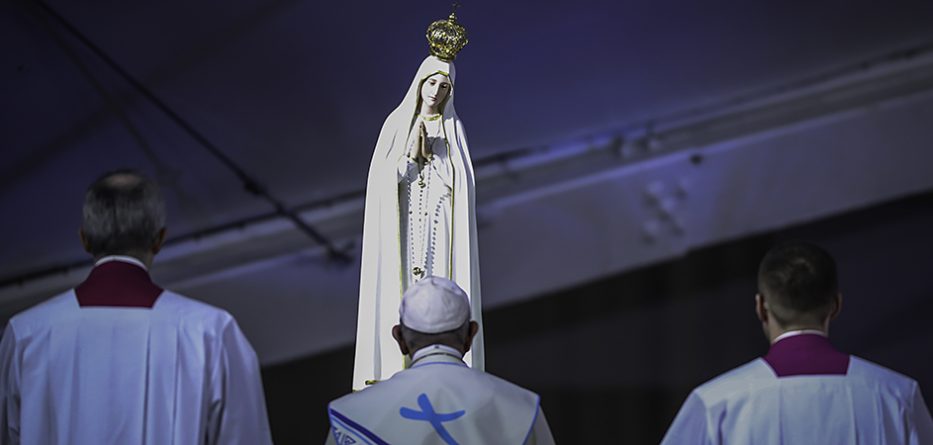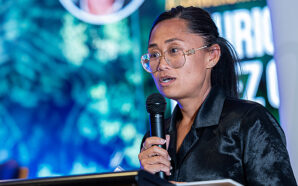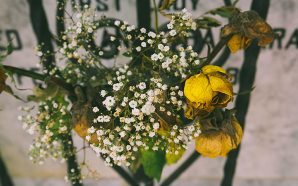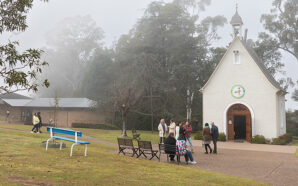Homily for the Fourth Sunday of Advent
Readings: 2 Samuel 7:1-16; Romans 16:25-27; Luke 1:26-38
20 December 2020
Ursula Fanthorpe started life as a poet when she worked as a receptionist at a psychiatric hospital. She ended up becoming the first woman professor of poetry at Oxford. Every year she penned a poem for Christmas for inclusion in her Christmas cards. She thought one advantage of Christmas for a poet was having a captive audience. I suppose the same goes for a preacher. But she identified two problems. First, the captive audience includes people of all ages and all educational levels: ‘The words should be accessible to all ages, because that’s what we feel is needed for a universal message. But it’s unnervingly easy to be too simple and sentimental, or too hard and intellectual.’ The preacher, like the poet, needs to have something of all these qualities in due moderation. The other problem she identified after 28 years was that ‘trying not to repeat oneself becomes progressively more difficult. The cast, after all, is limited: Virgin, carpenter, baby, angels, wise men and so on.’ Fanthorpe’s solution was to rope in absentees like a sheepdog, a cat or a robin.
LISTEN: https://soundcloud.com/frank-brennan-6/homily-201220
Here’s her poem What the Donkey Saw:
No room in the inn, of course,
And not that much in the stable,
What with the shepherds, Magi, Mary,
Joseph, the heavenly host –
Not to mention the baby
Using our manger as a cot.
You couldn’t have squeezed another cherub in
For love nor money.
Still, in spite of the overcrowding,
I did my best to make them feel wanted.
I could see the baby and I
Would be going places together.
In spite of COVID, in spite of lockdowns, in spite of the isolation, all of us have known someone this year who did their best to make us feel wanted. And we are so grateful to them as we prepare for Christmas. At our best, each of us has done what we can this past year to make others feel wanted, appreciated and included. Our prayer this Christmas will be that everyone’s Christmas be blessed, happy AND social, coming in the wake of so many months of isolation and lockdown.
In today’s gospel, the master story teller Luke gives us the second of three scenes when the angel greets someone, urges them not to be afraid, makes a bold, unlikely promise, and provides a sign as proof when the one greeted asks ‘How can this be?’.
First there was Zechariah who was told not to be afraid, that his prayer was answered, that his wife would conceive and bear a child. Zechariah wonders how this can be because he is an old man and his wife is getting on in years. Zechariah was then struck dumb until the child was born and given the unlikely, prophesied name of John.
Second, in today’s gospel, is Mary who is told not to be afraid, that she is to bear a son. Mary wonders how this can be because she is not married. Mary is given the sign that her aged relative Elizabeth is now pregnant.
Third, on Christmas morning, the shepherds are told not to be afraid, and they are told that a Saviour has been born, he is Christ the Lord. They are given a sign, and this time the sign is the same as the promise. They will find a baby wrapped in swaddling clothes and lying in a manger. This baby is the Saviour. The baby is Christ the Lord.
On this last Sunday of Advent, each of us is being told, ‘Do not be afraid.’ So let’s admit and name our fears. We all carry some fears about COVID and its health, economic and social effects on each of us and our loved ones. The angel in Luke is God’s messenger. The Lord is with us, hearing and understanding our fears, responding, ‘Do not be afraid.’ Today the Lord is making a promise to us, the promise of Christmas – the promise of joy, blessing and connectedness despite the lockdown and isolation we have all had to endure. And he is giving us a sign, perhaps many signs.
One sign which remains vivid for me was shone many times when I was doing some relieving hospital chaplaincy during the height of the second COVID wave here in Melbourne. I would be called in to administer the last rites for patients as they lay dying, unable to have their family and loved ones in attendance. Each of us around the bed would be dressed in full PPE. Sometimes there would be a nurse with an I-Pad permitting family members to make their last farewells to their loved one. Every nurse, each one of them, was a Florence Nightingale. Particularly at night, there would be one nurse to each dying patient in separate rooms. The nurse would accompany the patient through death. On one occasion, I was privileged to hear a woman out in the countryside speaking to her dying husband on the I-Pad. She told him, ‘You’ve always been a fighter. But now darling, it’s time to let go.’ The nurse in PPE holding the I-Pad at that moment was an angel. A moment of light, grace and connectedness in a time of darkness, isolation and despair.
Preparing for Christmas, let’s draw up our own checklist of those signs and promises we have seen and heard this past year as we’ve wondered, ‘How can this be?’, while being terrified and afraid. Let’s see those angels who appeared to us.
Mary was betrothed to a man named Joseph. Pope Francis, with piety which may be a little foreign to many of us Australians, has just issued an Apostolic Letter entitled PatrisCorde, (With a Father’s Heart) marking the 150th anniversary of Pope Pius IX’s proclamation of Joseph as Patron of the Universal Church. Reflecting on today’s gospel, Francis says, ‘Joseph had the courage to become the legal father of Jesus, to whom he gave the name revealed by the angel: “You shall call his name Jesus, for he will save his people from their sins” (Mt 1:21). As we know, for ancient peoples, to give a name to a person or to a thing, as Adam did in the account in the Book of Genesis (cf. 2:19-20), was to establish a relationship.’
During the pandemic, Francis has reflected much on Joseph as he ‘experienced, amid the crisis, how our lives are woven together and sustained by ordinary people, people often overlooked. People who do not appear in newspaper and magazine headlines, or on the latest television show, yet in these very days are surely shaping the decisive events of our history’. Francis writes: ‘Each of us can discover in Joseph – the man who goes unnoticed, a daily, discreet and hidden presence – an intercessor, a support and a guide in times of trouble. Saint Joseph reminds us that those who appear hidden or in the shadows can play an incomparable role in the history of salvation. A word of recognition and of gratitude is due to them all.’
Here’s Fanthorpes’ poem Joseph:
I am Joseph, carpenter,
Of David’s kingly line,
I wanted an heir; discovered
My wife’s son wasn’t mine.
I am an obstinate lover,
Loved Mary for better or worse.
Wouldn’t stop loving when I found
Someone Else came first.
Mine was the likeness I hoped for
When the first-born man-child came.
But nothing of him was me. I couldn’t
Even choose his name.
I am Joseph, who wanted
To teach my own boy how to live.
My lesson for my foster son:
Endure. Love. Give.
Following Mary and Joseph into the Christmas event, let’s bring to the all too familiar the right mix of simplicity, sentiment, and hard thinking acknowledging that nothing is impossible for God. Like Mary, may we have the faith to respond: ‘Behold, I am the handmaid of the Lord. May it be done to me according to your word.’ No matter what mix of consolation and perplexity we may feel with such a response, we remember that it was that precise moment when the angel departed from Mary. Immediately turning attention from herself to another, Mary set off alone to assist her kinswoman Elizabeth. While busily preparing for Christmas, let’s focus on following the signs as did Zechariah, Mary and the shepherds, meeting the practical needs of others as did Mary and Joseph.
Fr Frank Brennan SJ is the Rector of Newman College, Melbourne, the Distinguished Fellow of the P M Glynn Institute, Australian Catholic University, and the former CEO of Catholic Social Services Australia (CSSA).








